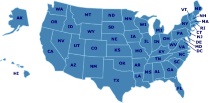Resources
A Reason For® Spelling
A Reason For® Spelling combines the latest research on how children learn to spell with all the strengths of traditional programs. It teaches highfrequency base words, plus hundreds of other word forms. Values-based stories set the theme each week and help make spelling fun. You'll find product information about A Reason For® Spelling here.
Spell to Write & Read
This teacher's manual, written by a homeschool educator with experience as a professional school teacher and private tutor, shows how to teach reading the "write" way. By phonetically teaching spelling from the start as the backbone for reading, all children can be taught, regardless of learning styles, to read and spell. If your student knows how to read already, this program can improve his or her spelling. Find out more about this product here.
Learning Language Arts Through Literature
Learning Language Arts Through Literature is a fully integrated language arts program that teaches grammar, reading, spelling, vocabulary, writing mechanics, creative writing, thinking skills and more.
Sing, Spell, Read & Write
Sing, Spell, Read & Write is a phonics-based program that uses a 36-step program of carefully sequenced steps to teach reading, writing, and spelling. More product information can be found here.
Spelling for the Homeschooled Student
Scripps National Spelling Bee
Scripps National Spelling Bee is the most widely known spelling bee organizer in the world. In general, the program is open to students who have not reached their 16th birthday on or before the date of the national finals and who have not passed beyond the eighth grade at the time of their school finals.
PBS Kids Spelling Games
Your kids can practice spelling with these online games.
How I Teach a Large Family in a Relaxed, Classical Way: Language Arts
Tips for teaching language arts (writing, grammar, handwriting) in a large family.
When Should I Start Teaching Spelling in Homeschool?
Spelling is more than just associating letters with sounds and deciphering them. Spelling is an essential element to writing clearly and convincingly. Some programs start testing children right away like at Kindergarten level. However, instead of teaching spelling, a program may add the element of testing.
Teaching spelling is one thing and testing spelling is quite another thing.
How to Teach Spelling in Your Homeschool
Homeschooling is a great opportunity because you can choose the homeschool spelling curriculum that matches your child's needs. As your child's teacher, you decide the method of instruction, how frequent the lessons are, the pace, the intensity, and the amount of review. No one else can do that for your child! For all children, from those needing remedial help to those who are gifted in this area, individualized spelling instruction is an unbeatable choice.
Featured Resources
As an Amazon Associate, we earn from qualifying purchases. We get commissions for purchases made through links on this site.
Homeschooling: The Teen Years : Your Complete Guide to Successfully Homeschooling the 13- to 18- Year-Old (Prima Home Learning Library)
The teen years are when many homeschooling parents start to question or abandon their efforts. It's a precarious time, with challenging academics, pressing social issues, and the prospect of college looming. Parents can now breathe easy: this guide calms the teen-time jitters and even offers hope to those just turning to homeschooling now that their child is about to enter high school. With brief "how we did it" testimonies from other parents sprinkled throughout the book, author Cafi Cohen offe...
Right-Brained Children in a Left-Brained World: Unlocking the Potential of Your ADD Child
Understanding your child's learning style can help with challenges in learning, improving outcomes in reading, writing, and behavior. This book offers strategies for understanding your child's learning style and presents tools that you can use to become more successful in your homeschooling.
Cuisenaire Rods Multi-Pack
Grades Pre K & up. An economical way to bring rods into the classroom. Pack contains six sets of 74 rods, six trays with, and Teacher's Guide. For use with 12-18 students.
Real Lives: Eleven Teenagers Who Don't Go to School
Grace Llewellyn, author of the The Teenage Liberation Handbook, offers the stories of 11 teens who made the decision to reject traditional schooling methodologies and take their education into their own hands. The essays highlight offer a day-in-the-life look at teen homeschooling and unschooling, as the teens embraced self-education and increased in their self-confidence and motivation.
Dr. Montessori's Own Handbook
A short, illustrated guide to the use of Montessori classroom materials. Describes how to set up a "children's house" - an environment for learning where children can be their own masters.





